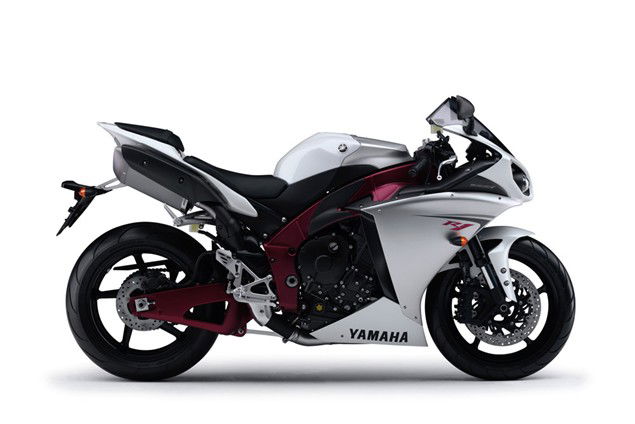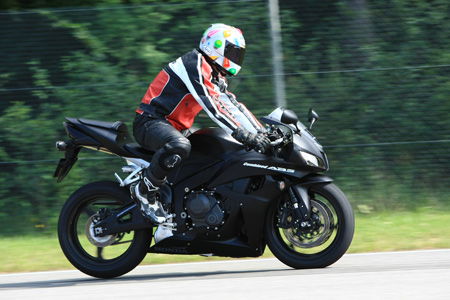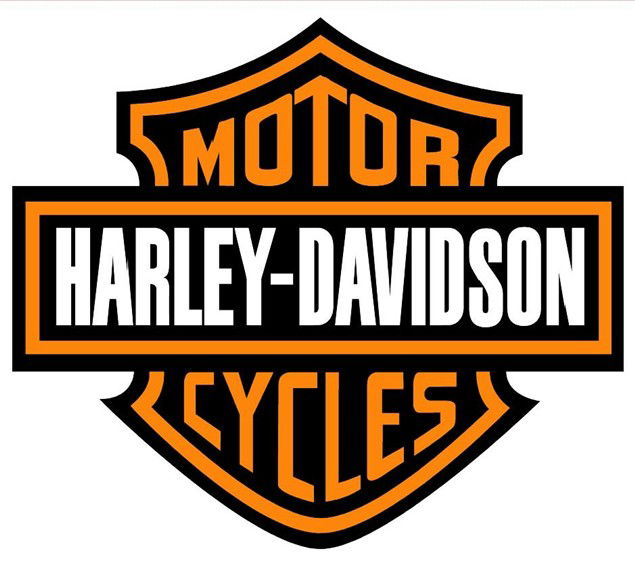High bike prices
‘Perfect Storm’ in the market place pushes new bike prices to an all-time high


The recession is almost over but its brought big hikes in the prices of new bikes. We look at how much it really costs to own a new superbike.
Sharp increases over the past 12 months mean new bike prices are now at an all-time high. The recommended retail price of some models have gone up by 20% or more, and the overall average price increase during the last year isn’t much less. There are many factors behind these price rises, not least a weak pound, an increase in the cost of raw materials and the end of parallel importing, where dealers brought cheaper bikes into the country from Europe.
As an example, consider the base model of Ducati’s flagship sportsbike. Through the countless derivations – 916, 996, 998, 999, 1098 and 1198 – over the last fifteen years the price has remained surprisingly stable, that is until you consider 2009. A 916 cost £11,800 in 1994, Five years later the equivalent bike, the 996, cost £11,400. The 999 was £11,250 in 2004 and stayed at that price until 2006. And when the 1098 arrived in 2008 it was actually cheaper at £10,500. Now, in 2009, Ducati’s equivalent model, the 1198, has jumped to £12,995, an increase of 24% in one year following fifteen years during which the price was virtually static.
The Yamaha R1 has followed a similar trend, costing £9199 when launched in 1998 and remaining stable at pretty much the same price through to 2008, when Yamaha’s flagship had a list price of £8999. During 2009 it’s leapt up twice; first to £9999 and then again to £10,999 – an increase of almost a quarter in a matter of months.
And these are just examples – we don’t want to single out Ducati or Yamaha; prices are increasing almost across the board in the UK bike market. Honda’s XL700V Transalp cost £5499 at the end of 2008. The list price now is £6541, a 19% increase. The CB1300S was £7099 at the end of 2008 but its price has since risen 14% to £8121. It’s a similar story with Kawasaki. The ZX-6R’s pricetag
has drifted north by some 13% to £7899 and the 250 Ninja is now 18% more expensive at £3899. It’s the same story at Suzuki where the SV650S’ list price has increased by some 11% to £5100.
The pricing policies of the European manufacturers are less consistent. Triumph and BMW prices have either barely increased in recent months but KTM’s have soared, with some models up 20% or more during the last year. Last year the 990 Adventure had a list price of £8895. It’s now £10,895. These are all full recommended retail prices. Of course we’ve highlighted some of the largest increases but, overall, prices have risen by around 10-15% on average.
Substantial price hikes are so common, one manufacturer told Visordown, they were thinking of sending out a press release making a big noise about how their increases were smaller than competitors, but decided against the idea on the grounds it was a bit petty.
Some manufacturers are keen to point out that, even after the price increases, their bikes only cost about the same as they did in the mid to late 1990s, which is true. A Honda FireBlade cost £9265 back in 1995 and a new one today is actually £44 cheaper. In 1997 a Kawasaki ZX-6R was £7195 and today a new one would be £7899. Those aren’t big increases considering the advanced technology and materials in the 2009 machines. Factor in inflation and bike prices have actually been dropping in real terms until very recently.
Currency fluctuations are the most significant factor to blame for the recent hikes. The pound is weak compared to the euro and the Japanese yen. Raw material costs also affect bike prices and these rose significantly during 2008. It’s taken a while for the fallout of these increases to directly affect new bike prices.
While the pound remains weak, some experts think it’ll slowly regain value against other key currencies. Material costs have also fallen significantly in recent months. But will we see bike prices come down? It’s possible but the pound will need to regain some serious ground on the euro and yen first.
Ducati UK’s press manager Alan Jones told Visordown: “A dramatic change in currency exchange rates meant we were forced to increase prices, not only to try and bring them in line with the rest of Europe but also because the UK had become the lowest revenue market in Europe. As for whether the prices will change again soon, that depends on the currency exchange rates. At the moment the pound has settled down against the euro but a dramatic change doesn’t look likely. If it happens Ducati would review the situation again.”
It’s a similar story over at Yamaha UK. Their marketing manager, Simon Belton, told Visordown: “On a global basis, rising manufacturing costs and volatile exchange rates are making it impossible to hold current prices here in the UK. Therefore Yamaha had to increase prices all models. The increases have been kept to a minimum.”
Because of the way BMW make bikes to order for customers rather than holding lots of stock, they aren’t pricing uniformly across Europe and have kept prices low for UK customers. They’re a company on a roll right now and, with the all-new S1000RR on the way, their future looks rosy.
As ever in the bike market, there are still good deals to be had out there, it’s just you need to look a little harder to find them. And, like used bike buyers, those buying new should consider shopping around and not setting their heart on a specific model. Bear in mind there are some awesome finance packages out there at the moment, too.
1198 - £12,995
“Entry-level” 1198 – sweet as a nut but how much?! 24% increase in one year following 15 years without a change in price
YZF-R1 - £10,999
MotoGP technology, now at MotoGP prices 22% increase in one year following 10 years without a change in price

